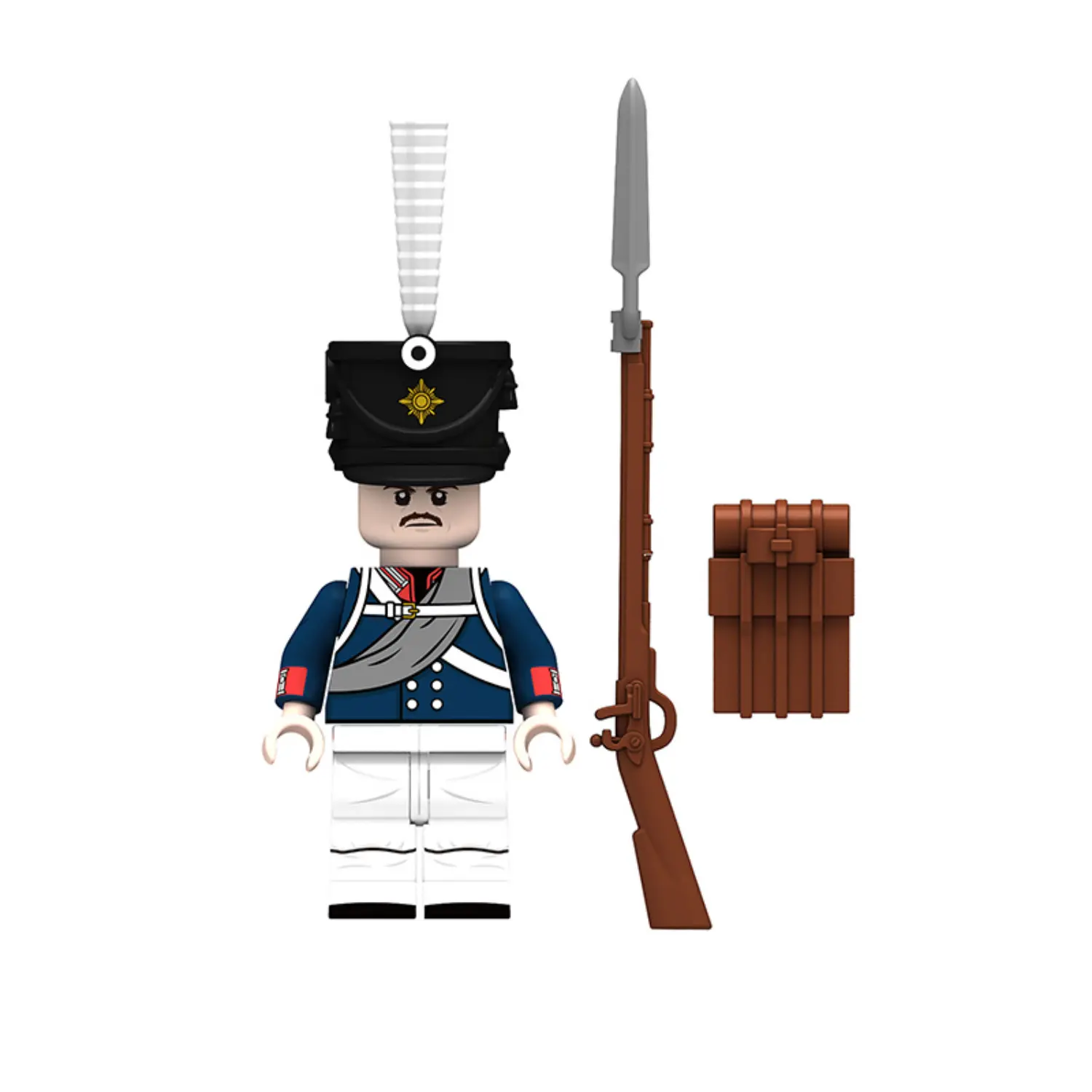This image displays a toy minifigure representing a Prussian Foot Guard (Preußische Garde zu Fuß) soldier from the Napoleonic Wars era (specifically the late period, 1813–1815).
Here is a detailed breakdown of the figure and its historical significance:
The Figure: Prussian Foot Guard This figure represents the elite professional infantry of the Prussian Army, distinct from the militia (Landwehr) seen in figure N021.
-
Uniform: He wears the traditional Prussian Blue tunic (Dunkelblau) with red collar and cuffs. This dark blue color was the standard for the Prussian army for centuries. He wears white breeches and black gaiters.
-
Headgear: He wears a tall, black Shako. The key identifier here is the Gold Star plate on the front. This represents the Order of the Black Eagle, a symbol worn exclusively by Guard Regiments (regular line infantry would typically have an eagle plate or a simple cockade). The tall White Plume further signifies his elite status or specific battalion.
-
Equipment (The Blanket Roll): Like the Landwehr figure, this soldier wears a Grey Greatcoat Roll (Mantelrolle) strapped diagonally across his chest from left to right. This was a signature practice of the Prussian army; it provided protection against saber cuts in close combat and served as their bedding at night.
-
Weapon: He is equipped with a Musket with a Bayonet.
-
Accessories: A brown knapsack is included for the back.
-
Facial Features: He sports a mustache, a common martial style of the era.
Historical Background: The Prussian Foot Guards were the pride of the Prussian Army. After Prussia was devastated by Napoleon in 1806, the army underwent massive reforms. By 1813, during the War of Liberation, the Prussian army returned with a vengeance. The Foot Guards were the best-trained and most disciplined units, comparable to Napoleon’s Imperial Guard. They fought under the command of the ferocious Field Marshal Blücher at the Battle of Leipzig (The Battle of Nations) and played a decisive role in arriving just in time to save the British at the Battle of Waterloo.



Reviews
There are no reviews yet.